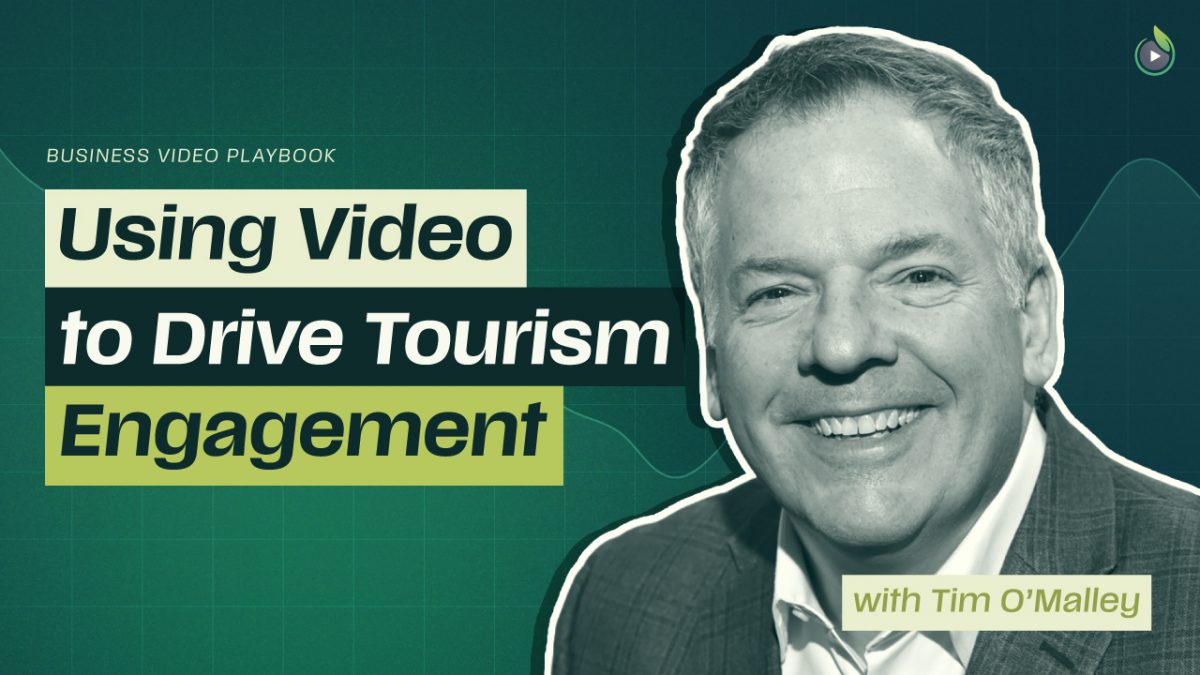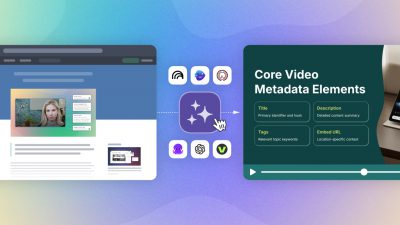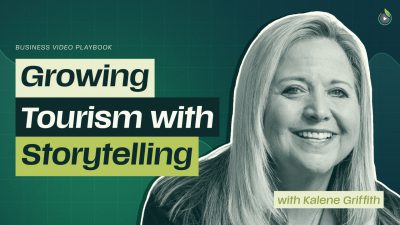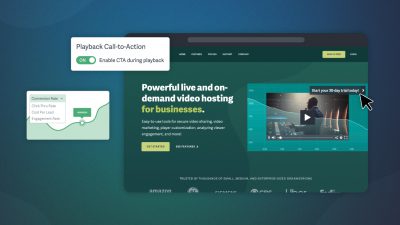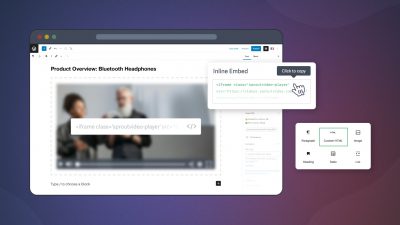How hospitality and tourism brands inspire travelers and turn video views into foot traffic
Millions of tourists arrive annually in Chicago, drawn by its world-class architecture, museums, restaurants, sports, and entertainment. The city ranks among the top five U.S. destinations for culture and is home to the second-highest number of Fortune 500 headquarters in the country.
Tourism in Chicago is a multi-billion-dollar industry where local businesses and cultural institutions compete for attention. Nearly half of all visitor activity bookings happen after travelers arrive, which means valuable marketing moments occur in many ways: at the concierge desk, online, or on the streets when people ask, “What should I do right now?”
A Conversation with Tim O’Malley, Founder of Ateema Media
In Episode Six of the Business Video Playbook, Tim O’Malley, CEO of Ateema Media (a Tourism Marketing Agency), explained how he created the Chicago Does Interactive Video Map. O’Malley has years of experience working within the Chicago tourism industry and the use of engaging, often viral, video storytelling. For example, a behind-the-scenes video of the band Oasis testing a drone show the night before their concert went viral overnight, racking 225,000 views. Tim shares how authentic storytelling video content can turn small moments into massive engagement.
The Chicago Does Interactive Video Map is a hybrid print and digital product that leverages multiple visitor touchpoints throughout their travel journey. It connects visitors directly to restaurants, venues, and attractions through video storytelling, interactive mapping, and traditional print and digital advertising. The map serves as a visitor media platform, an acquisition tool for local businesses, and an example of exceptional marketing for hospitality and tourism.
We’re trying to take the advertising dollars that would normally be spent on brochures and fold them into something that’s more useful for the visitor.
—Tim O’Malley, CEO, Ateema Media and Marketing
Watch the full interview now to see how Chicago Does combines video, maps, and real-time discovery to drive engagement and foot traffic. In the video, you’ll see the map come alive with real examples of restaurants, attractions, and events. Watch how these videos turn curiosity into real-world visits.
Why the Interactive Video Map Works
The Chicago Does Interactive Video Map succeeds because it delivers value on both sides:
- For visitors, it’s a simple, mobile-first way to explore the city, see what’s nearby, and quickly decide what to do. The videos are short, authentic, and engaging, giving travelers a feel for an experience before they commit.
- For partners, it’s the principal element within a multi-touch referral, print, and digital platform. Backed by storytelling rather than just logos or listings, businesses and venues reach visitors in a way that drives real-world outcomes like foot traffic, reservations, and ticket sales
O’Malley also explains why some videos achieve viral success and others don’t; a lesson every tourism marketer should learn.
“If we’re going to do it, we’re going to do it through storytelling and video, not just putting up logos.”
—Tim O’Malley, CEO, Ateema Media and Marketing
Lessons for Building a Video-First Tourism Platform
1. Balance Ads with Authentic Storytelling
A common trap for city guides is feeling like one long commercial. O’Malley emphasized that content must stay rooted in story, not just sales. Restaurants, museums, and events shine when presented by authentic voices, real visuals, and unique stories about the city. “The point isn’t a slick ad. It’s showing real people, real food, real spaces in a way that feels authentic,” said O’Malley.
Sometimes, overlooked parts of a city make the most powerful stories. Take the Chicago Pedway, for example. It’s an underground tunnel system that helps pedestrians during the cold Chicago winters. Most locals have heard of it but don’t really understand it. One of Ateema’s video creators shot a short video describing the Pedway and how to use it.
“People in Chicago had always heard of the Pedway but didn’t really know what it was. When our creator explained it with a clear hook and visuals, it gave them closure.”
—Tim O’Malley, CEO, Ateema Media and Marketing
This type of nuanced storytelling tapped into a curiosity gap. The result? The video exploded to 1.4 million views on TikTok and Instagram, proving that authentic storytelling can drive massive engagement.
The lesson is to treat video first as helpful and engaging media, and advertising second.
2. Design for Short, On-the-Go Engagement
Travelers aren’t sitting down for two-minute ads. They want quick hits of authentically local inspiration.
“If a visitor is standing in a hotel lobby with their phone, they’re not going to watch a two-minute video. They’ll give you 20 or 30 seconds.”
—Tim O’Malley, CEO, Ateema Media and Marketing
Videos should be long enough to capture initial interest and short enough to respect attention spans. Each mobile-first video matches each stage of the visitor’s decision-making journey. O’Malley demonstrates how to structure these quick-hit clips in the video.
3. Build in Easy Updates
Cities move fast. In Chi-Town, menus change, events rotate, exhibits close. Guides quickly become outdated without an easy way to update videos and listings.
“Events come and go. You need a system where updates are simple and low-cost, otherwise the content gets stale.”
—Tim O’Malley, CEO, Ateema Media and Marketing
A scalable product requires workflows for ongoing updates: whether that’s templated video formats, content tiers, or collaborative tools for partners. “The idea is to create recognizable formats. Whether it’s a 30-second hook on an attraction or a deeper dive into a neighborhood, partners know what to expect,” said O’Malley

Episode 6: Video Strategies for Visitor Engagement with Tim O’Malley
See how video storytelling, real-time mapping, and partnerships drive engagement: watch the full episode to uncover all the strategies that helped Chicago Does go viral.
4. Sell Foot Traffic, Not Ad Space
Ultimately, restaurants and venues don’t care about video views and ad impressions. They measure ROI by people walking through the door. Positioning the Interactive Video Map as a direct driver of customers proved more compelling than selling “visibility.”
“For restaurants, we weren’t selling ads; we were selling foot traffic. That’s what they care about.”
—Tim O’Malley, CEO, Ateema Media and Marketing
This shift reframes the platform as performance-driven, which helps secure buy-in and reduce churn. In the full interview, O’Malley walks through how he measures ROI for every campaign, turning video views into real-world customers.
5. Lean on Partnerships for Distribution
Discoverability is everything. Hotels and the concierge community became critical partners because they wanted to offer guests a richer experience without producing their own guides.
“Hotels love it because it gives them something valuable to hand guests without spending their own money on guides.”
—Tim O’Malley, CEO, Ateema Media and Marketing
Working with tourism boards, chambers of commerce, and hospitality partners gave the Interactive Video Map credibility and ensured travelers could find and use it. “Our map must meet visitors where they are, in the hotel lobby, in their hands. That’s why hotels and tourism boards are essential partners,” said O’Malley.
From Chicago to Beyond
The Chicago Does Interactive Video Map shows how destination marketing can evolve into something more immersive, practical, and authentic. By blending short-form video storytelling, mobile-first design, and strong partnerships, the product creates value for the visitor and the business.
And the lessons apply far beyond Chicago. Whether you’re a DMO, tourism marketer, or local business, the takeaway is the same: if you want to influence travelers, meet them where they are. Share stories that feel real, tools that make decisions easier, and partnerships that extend your reach.
“Venues don’t care about views; they care if someone walks in the door after watching the video.”
—Tim O’Malley, CEO, Ateema Media and Marketing

Episode 6: Video Strategies for Visitor Engagement with Tim O’Malley
See how video storytelling, real-time mapping, and partnerships drive engagement: watch the full episode to uncover all the strategies that helped Chicago Does go viral.
Want to promote your destination with video storytelling?
Start your free trial of SproutVideo today and bring your community to life through video.



